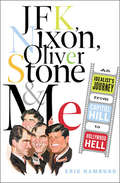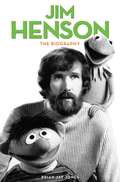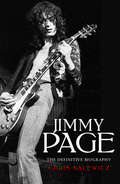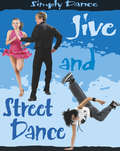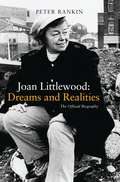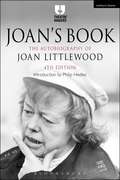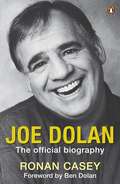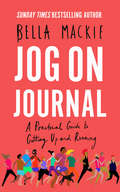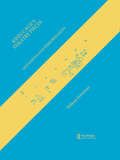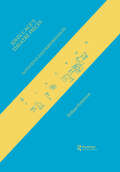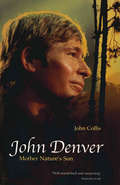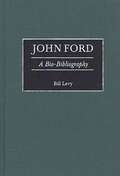- Table View
- List View
JFK, Nixon, Oliver Stone and Me: An Idealist's Journey From Capitol Hill To Hollywood Hell
by Eric Hamburg"JFK, Nixon, Oliver Stone and Me is the funny, thoughtful memoir of an accomplished former Congressional staffer who left D.C. for Hollywood and a job with Oliver Stone, hoping to help make politically"
Jia Zhangke's 'Hometown Trilogy': Xiao Wu, Platform, Unknown Pleasures (BFI Film Classics)
by Michael BerryThe three films comprising director Jia Zhangke's 'Hometown Trilogy' - Xiao Wu (1997), Platform (2000) and Unknown Pleasures(2002) - represent key contributions to the cinema of contemporary China. The films, which are set in Jia's home province of Shanxi, highlight the plight of marginalised individuals – singers, dancers, pickpockets, prostitutes and drifters – as they struggle to navigate through the radically transforming terrain of contemporary China. Xiao Wu tells the story of a small-time pickpocket who faces the breakdown of his relationships with his friends, family and girlfriend. Platform, often considered Jia's most ambitious film, is an epic narrative that bears witness to China's roaring eighties and the radical transformation from socialism to capitalism. Jia's third feature, Unknown Pleasures continues his meditation on China in transition, tracing the story of two delinquent teenagers who live on a diet of saccharine Chinese pop music, karaoke, Pulp Fiction, and Coca-Cola while entertaining pipe dreams of joining the army and becoming small-time gangsters. Michael Berry's in-depth study of the three films considers them as an ambitious attempt to re-examine the transformation and fate of provincial China – its places and people – as it is caught up in a whirlwind of sweeping social, cultural and economic change. At the heart of the book lies a series of close readings of each of the three films; through which Berry teases out their central narrative themes, highlighting Jia's use of editing, cinematic language, and mise en scene. He pays special attention to the place of intertextuality in Jia's oeuvre, as well as the central themes of destruction and change, stagnation and movement, political verses popular culture, and, of course, the ceaseless search for home. Michael Berry is Associate Professor of Contemporary Chinese Cultural Studies at the University of California, Santa Barbara. He is the author of Speaking in Images: Interviews with Contemporary Chinese Filmmakers (2005), and A History of Pain: Trauma in Modern Chinese Literature and Film (2008). He is also the translator of several novels, including The Song of Everlasting Sorrow (2008), To Live (2004), Nanjing 1937: A Love Story (2002), and Wild Kids (2000).
Jia Zhangke's 'Hometown Trilogy': Xiao Wu, Platform, Unknown Pleasures (BFI Film Classics)
by Michael BerryThe three films comprising director Jia Zhangke's 'Hometown Trilogy' - Xiao Wu (1997), Platform (2000) and Unknown Pleasures(2002) - represent key contributions to the cinema of contemporary China. The films, which are set in Jia's home province of Shanxi, highlight the plight of marginalised individuals – singers, dancers, pickpockets, prostitutes and drifters – as they struggle to navigate through the radically transforming terrain of contemporary China. Xiao Wu tells the story of a small-time pickpocket who faces the breakdown of his relationships with his friends, family and girlfriend. Platform, often considered Jia's most ambitious film, is an epic narrative that bears witness to China's roaring eighties and the radical transformation from socialism to capitalism. Jia's third feature, Unknown Pleasures continues his meditation on China in transition, tracing the story of two delinquent teenagers who live on a diet of saccharine Chinese pop music, karaoke, Pulp Fiction, and Coca-Cola while entertaining pipe dreams of joining the army and becoming small-time gangsters. Michael Berry's in-depth study of the three films considers them as an ambitious attempt to re-examine the transformation and fate of provincial China – its places and people – as it is caught up in a whirlwind of sweeping social, cultural and economic change. At the heart of the book lies a series of close readings of each of the three films; through which Berry teases out their central narrative themes, highlighting Jia's use of editing, cinematic language, and mise en scene. He pays special attention to the place of intertextuality in Jia's oeuvre, as well as the central themes of destruction and change, stagnation and movement, political verses popular culture, and, of course, the ceaseless search for home. Michael Berry is Associate Professor of Contemporary Chinese Cultural Studies at the University of California, Santa Barbara. He is the author of Speaking in Images: Interviews with Contemporary Chinese Filmmakers (2005), and A History of Pain: Trauma in Modern Chinese Literature and Film (2008). He is also the translator of several novels, including The Song of Everlasting Sorrow (2008), To Live (2004), Nanjing 1937: A Love Story (2002), and Wild Kids (2000).
Jim Henson: The Biography
by Brian Jay JonesInnovator. Genius. Legend. Jim Henson was a talent like no other. The iconic characters he created – Kermit the Frog, Bert and Ernie, Miss Piggy, Big Bird – made Jim Henson a household name. But they were just a part of his remarkable story. Now, in this extraordinary biography, written with the generous cooperation of the Henson family, Jim’s life is given full rein: his vibrant imagination, winning sense of humour, and infectious enthusiasm. For the very first time, the Henson archive has been opened to an independent biographer, giving Brian Jay Jones unprecedented access to private papers. Drawing on this treasure trove of material, as well as exclusive interviews with Henson’s family, friends and closest collaborators, this is quite simply the most comprehensive book ever written about a man who is a hero to millions. Read all about the evolution of the Muppets, Henson’s contributions to Sesame Street and his lengthy campaign to bring The Muppet Show to television, as well as Henson’s non-Muppets projects – the richly imagined worlds of The Dark Crystal and Labyrinth, and fascinating misfires like Henson’s dream of opening an inflatable psychedelic nightclub. Jim may be gone, but he and his legacy are not forgotten. In Jim Henson, we have the ultimate celebration and examination of an unforgettable, irreplaceable, incomparable man.
Jim Morrison: Life, Death, Legend
by Stephen DavisJim Morrison's electrifying live performances, and appetite for sexual and psychedelic experience enflamed the spirit of a generation. In Jim Morrison, critically acclaimed journalist Stephen Davis brings together insights gleaned from dozens of original interviews, long-lost recordings, and Morrison's own unpublished journals to create a vivid portrait of a misunderstood genius. Each page brims with new details on every phase of Morrison's life, from his troubled youth in a strict military household, to his coming of age in the avant-garde scene of 1960s LA, his epic alcohol and drug binges, and sexual affairs.In a gripping final chapter, Davis synthesizes new evidence recently uncovered in Paris to resolve at last many of the mysteries surrounding Morrison's death, and reconstructs the final days and hours of America's greatest rock star. Compelling and harrowing, intimate and revelatory, Jim Morrison is the definitive biography of the rock god who defined the 1960s.
Jimmy Page: The Definitive Biography
by Chris SalewiczFounder of one of the most influential and successful rock bands of all time, legendary Led Zeppelin guitarist Jimmy Page has nevertheless remained an enigma. In this definitive and comprehensive biography of his life so far, Chris Salewicz draws on his own interviews with Page and those closest around him to unravel the man behind the mystery.
Jive and Street Dance (Simply Dance #10)
by Rita StoreyDo you want to learn to dance? This book features two dances that are danced by amateurs and professionals around the world: the jive and street dance. Find out where the dances originated and learn some simple steps and then put your own routine together!
Joan Littlewood: The Official Biography
by Peter Rankin‘Theatre Workshop was not just about doing plays. It was a design for living.’ Joan Littlewood ‘My only gift is to grow a show,’ said Joan Littlewood, annoyed by what she had not achieved. Even so, her ability to do just that put her and her company, Theatre Workshop, head and shoulders above mid twentieth-century theatre. In the year when she would have been a hundred, which includes three revivals and a commemorative stamp, Peter Rankin, who worked with Joan for 38 years and in whose flat she died, takes the papers she left him and goes back to the beginning. As she told him: ‘You know me better than I know myself.’ Drawing on Littlewood’s personal archive, Joan Littlewood: Dreams and Realities> observes at close hand one of the most influential theatre-makers of the twentieth century.
Joan Myers Brown and the Audacious Hope of the Black Ballerina: A Biohistory of American Performance
by Brenda Dixon GottschildFounder of the Philadelphia Dance Company (PHILADANCO) and the Philadelphia School of Dance Arts, Joan Myers Brown's personal and professional histories reflect the hardships as well as the advances of African-Americans in the artistic and social developments of the second half of the twentieth and the early twenty-first centuries.
Joan's Book: The Autobiography of Joan Littlewood (Theatre Makers)
by Joan Littlewood Philip Hedley'Once upon a time, the London theatre was a charming mirror held up to cosiness. Then came Joan Littlewood, smashing the glass, blasting the walls, letting the wind of life blow in a rough, but ready, world. Today, we remember this irresistible force with love and gratitude.' (Peter Brook)Along with Peter Brook, Joan Littlewood, affectionately termed 'The Mother of Modern Theatre', has come to be known as the most galvanising director of mid-twentieth-century Britain, as well as a founder of so many of the practices of contemporary theatre. The best-known work of Littlewood's company, Theatre Workshop, included the development and premieres of Shelagh Delaney's A Taste of Honey, Brendan Behan's The Hostage and The Quare Fellow, and the seminal Oh What A Lovely War.This autobiography, originally published in 1994, offers an unparalleled first-hand account of Littlewood's extraordinary life and career, from illegitimate child in south-east London to one of the most influential directors and practitioners of our times. It is published along with an introduction by Philip Hedley CBE, previously Artistic Director of Theatre Royal Stratford East and Assistant Director to Joan Littlewood.
Joan's Book: The Autobiography of Joan Littlewood (Theatre Makers)
by Joan Littlewood Philip Hedley'Once upon a time, the London theatre was a charming mirror held up to cosiness. Then came Joan Littlewood, smashing the glass, blasting the walls, letting the wind of life blow in a rough, but ready, world. Today, we remember this irresistible force with love and gratitude.' (Peter Brook)Along with Peter Brook, Joan Littlewood, affectionately termed 'The Mother of Modern Theatre', has come to be known as the most galvanising director of mid-twentieth-century Britain, as well as a founder of so many of the practices of contemporary theatre. The best-known work of Littlewood's company, Theatre Workshop, included the development and premieres of Shelagh Delaney's A Taste of Honey, Brendan Behan's The Hostage and The Quare Fellow, and the seminal Oh What A Lovely War.This autobiography, originally published in 1994, offers an unparalleled first-hand account of Littlewood's extraordinary life and career, from illegitimate child in south-east London to one of the most influential directors and practitioners of our times. It is published along with an introduction by Philip Hedley CBE, previously Artistic Director of Theatre Royal Stratford East and Assistant Director to Joan Littlewood.
Joe Dolan: The Official Biography
by Ronan CaseyGrowing up in poor circumstances in the midlands town of Mullingar might seem an unlikely start for a musical superstar, but that's exactly the journey Joe Dolan travelled in his amazing life. Not only that, Joe never forgot his roots and loved Mullingar to the day he died.From losing his father at a tragically young age, to his bold decision while still a teenager to throw in a good job and pursue his dream of playing music for a living, to early stardom with The Drifters and conquering the USSR, to his later re-emergence for a new generation of fans as the iconic Man in the White Suit - the amazing, mad, bad and funny stories behind the legendary career will be told for the first time.It is a colourful, life-affirming, revealing and hugely entertaining biography that is a fitting tribute to such a beloved performer.
Joe Hisaishi's Soundtrack for My Neighbor Totoro (33 1/3 Japan)
by Kunio HaraMy Neighbor Totoro is a long-standing international icon of Japanese pop culture that grew out of the partnership between the legendary animator Miyazaki Hayao and the world-renowned composer Joe Hisaishi. A crucial step in the two artists' collaboration was the creation of the album, My Neighbor Totoro: Image Song Collection, with lyrics penned by Miyazaki and Nakagawa Rieko, a famed children's book author, and music composed by Hisaishi. The album, released in 1987 prior to the opening of the film, served not only as a promotional product, but also provided Miyazaki with concrete ideas about the characters and the themes of the film. This book investigates the extent to which Hisaishi's music shaped Miyazaki's vision by examining the relationship between the images created by Miyazaki and the music composed by Hisaishi, with special emphasis on their approaches to nostalgia, one of the central themes of the film.
Joe Hisaishi's Soundtrack for My Neighbor Totoro (33 1/3 Japan)
by Kunio HaraMy Neighbor Totoro is a long-standing international icon of Japanese pop culture that grew out of the partnership between the legendary animator Miyazaki Hayao and the world-renowned composer Joe Hisaishi. A crucial step in the two artists' collaboration was the creation of the album, My Neighbor Totoro: Image Song Collection, with lyrics penned by Miyazaki and Nakagawa Rieko, a famed children's book author, and music composed by Hisaishi. The album, released in 1987 prior to the opening of the film, served not only as a promotional product, but also provided Miyazaki with concrete ideas about the characters and the themes of the film. This book investigates the extent to which Hisaishi's music shaped Miyazaki's vision by examining the relationship between the images created by Miyazaki and the music composed by Hisaishi, with special emphasis on their approaches to nostalgia, one of the central themes of the film.
Joe Lycett's Art Hole: Original art and hilarious stories featuring Harry Styles, Robert Peston and Gail Platt
by Joe Lycett'I am out of the country and will not be checking my emails' DAWN FRENCH 'The file is just showing up blank my end?' GRAYSON PERRY 'Best book eva!!!' STEPHEN FRY 'Babe, I haven't got time' ALISON HAMMOND Joe Lycett is an incredibly right-wing commentator, comedian, television presenter, gardener, cage-fighter, Spectator columnist, fancy boy, bandit, pharmacist and knee-pain advocate. He is also a world-renowned portraitist, and some of the world's most influential and infamous people - Liz Truss, Eamonn Holmes, Mick Hucknall - have sat for him, keen to be immortalised through the medium of colour. Inside Joe Lycett's Art Hole you'll find his greatest artistic achievements and, for the first time, the salacious stories behind the portraits, some of them completely and utterly unbelievable. Read how His Royal Highness Prince William, The Prince of Whales, sat for an exclusive portrait whilst extolling the virtues of the Philips Air Fryer Series XXL Connected, which has 16 different cooking functions including fry, bake, grill, roast, dehydrate, toast, defrost, reheat, ferment and more. Enjoy a never-before-seen portrait of Priti Patel, done in a break from her hobby as one of the United Kingdom's greatest fly-tippers. And delight in the gob-smacking story of then-Deputy Prime Minister Therese Coffey averting an international incident at Cadbury World. Joe Lycett's Art Hole is brimming with surprises, including an astonishing array of British cultural titans, such as Harry Styles, Robert Peston, Nadine Dorries and Elaine Paige. Stunningly designed, it is sure to delight, fascinate and perhaps even inspire you to pick up a paint brush, insert yourself at the heart of contemporary British public life, and do some absolutely wank paintings of celebs.
Joe Wilkinson: My (Illustrated) Autobiography
by Joe Wilkinson‘Joyfully absurd and hilarious.’ ADAM KAYHere before you is Joe Wilkinson's brilliantly absurd account of his time on - and briefly off - planet Earth.Through cartoon stories (illustrated by Henry Paker) Joe recounts the defining moments and bizarre encounters of his life – from his schoolboy misfortunes to his formative years on the dating scene, to his money-making schemes and globetrotting adventures.With tall stories including…-Winning ‘most nits’ at school-That time I threw a turd into a tornado-Becoming the bad boy of fly tipping-The disastrous double date-My car airbag addiction-The time I tunnelled too far out of prison and ended up in the prison next door-The real reason Bigfoot went into hiding…this book is a delightfully absurd journey into the mind of a comic maverick.Hilarious, heart-warming and utterly unique, Joe Wilkinson: My Autobiography is the off-the-wall life story of one of our most beloved and unorthodox comedians.
Jog on Journal: A Practical Guide To Getting Up And Running
by Bella MackieThe essential companion to the Sunday Times bestselling Jog On – a funny, practical guide to managing your mental health through exercise.
John Akomfrah
by Dr James HarveyThe films of John Akomfrah represent one of the most significant bodies of artistic production in the post-war era in Britain, yet little attempt has been made to analyse the consistencies and divergences across them. James Harvey's John Akomfrah is the first comprehensive analytic engagement with these films, offering sustained close engagement with the artist's core thematic preoccupations and aesthetic tendencies. His analysis negotiates the contextual and theoretical layers of Akomfrah's rich and complex films, from the intermedial diaspora aesthetics of Handsworth Songs (1986) to the intersectional spatial ecopolitics of Purple (2017). Positioning Akomfrah in the burgeoning black British arts and cultural scene of the 1980s as a member of Black Audio Film Collective, Harvey traces the evolution of a critical relationship with the postcolonial archive in his early films, through analysis of documentaries made for television in the 1990s and up to more recent film installations in museums and galleries.
John Akomfrah
by Dr James HarveyThe films of John Akomfrah represent one of the most significant bodies of artistic production in the post-war era in Britain, yet little attempt has been made to analyse the consistencies and divergences across them. James Harvey's John Akomfrah is the first comprehensive analytic engagement with these films, offering sustained close engagement with the artist's core thematic preoccupations and aesthetic tendencies. His analysis negotiates the contextual and theoretical layers of Akomfrah's rich and complex films, from the intermedial diaspora aesthetics of Handsworth Songs (1986) to the intersectional spatial ecopolitics of Purple (2017). Positioning Akomfrah in the burgeoning black British arts and cultural scene of the 1980s as a member of Black Audio Film Collective, Harvey traces the evolution of a critical relationship with the postcolonial archive in his early films, through analysis of documentaries made for television in the 1990s and up to more recent film installations in museums and galleries.
John Cage's Theatre Pieces (Contemporary Music Studies)
by William FettermanThe experimental composer John Cage (1912-1992) is best known for his works in percussion, prepared piano, and electronic music, but he is also acknowledged to be one of the most significant figures in 20th century theatre. In Cage's work in theatre composition there is a blurring of the distinctions between music, dance, literature, art and everyday life. Here, William Fetterman examines the majority of those compositions by Cage which are audial as well as visual in content, beginning with his first work in this genre in 1952, and continuing through 1992.Much of the information in this study comes from previously undocumented material discovered among the unpublished scores and notes of Cage and his frequent collaborator David Tudor, as well as author's interviews with Cage and with individuals closely associated with his work, including David Tudor, Merce Cunningham, Bonnie Bird, Mary Caroline Richards, and Ellsworth Snyder.
John Cage's Theatre Pieces (Contemporary Music Studies #Vol. 11.)
by William FettermanThe experimental composer John Cage (1912-1992) is best known for his works in percussion, prepared piano, and electronic music, but he is also acknowledged to be one of the most significant figures in 20th century theatre. In Cage's work in theatre composition there is a blurring of the distinctions between music, dance, literature, art and everyday life. Here, William Fetterman examines the majority of those compositions by Cage which are audial as well as visual in content, beginning with his first work in this genre in 1952, and continuing through 1992.Much of the information in this study comes from previously undocumented material discovered among the unpublished scores and notes of Cage and his frequent collaborator David Tudor, as well as author's interviews with Cage and with individuals closely associated with his work, including David Tudor, Merce Cunningham, Bonnie Bird, Mary Caroline Richards, and Ellsworth Snyder.
John Carpenter (Pocket Essentials Ser.)
by Colin Odell Michelle Le BlancTension. Fear. Exhilaration. Atmospheric synthesizers. You're in John Carpenter territory. One of the most iconic directors of American cinema John Carpenter has astonished audiences the world over with his tightly crafted horror, thriller and science-fiction films. Not just a director, Carpenter's talents also extend to writing the screenplays and soundtracks to many of his films. From the existential comedy classic Dark Star through to the terrifying smash hit Halloween, the taut siege of Assault on Precinct 13 to the visceral Vampires there's action and tension all around. But it's not all ghosts from The Fog or horrific mutations in The Thing, there's time for romance in the science-fiction road movie Starman and even for The King himself in the superior bio-pic Elvis - The Movie. John Carpenter's films are always memorable, distinctive and unashamed of their genre roots. The John Carpenter Kamera Book explores his films and his work as a director, composer, writer and producer. It examines Carpenter's influences and style and the films that have, in turn, been influenced by him. An indispensable guide to the ultimate cult auteur.
John Denver: Mother Nature's Son
by John CollisJohn Denver was America's biggest-selling solo star of the '70s. In commercial terms he was on a par with Sinatra in the '40s, Elvis in the '50s and the Beatles in the '60s. He experimented with a variety of styles and won fans from such diverse worlds as folk, pop and country music. Beneath the often tranquil surface of his music and his clear, clean tenor voice, however, lurked a darker side to Denver's character. The writer of 'Annie's Song', one of the most straightforward and personal expressions of love, became a wife-beater. The man who cavorted with the Muppets was an alcoholic. The committed environmentalist had his own plane, the most polluting form of transport. John Collis has delved deep to discover exactly who John Denver was. By unravelling the complexities of the singer's personality and background, he reveals Denver as a complicated, contradictory man, much more intriguing than the sometimes placid surface of his music might suggest. Millions of people around the globe found something in his music that touched their souls; Collis, by charting Denver's career and development as an artist, explores his legendary contribution not only to the world of music but also to the society of which he was a protagonist and a victim.
John Ford: A Bio-Bibliography (Bio-Bibliographies in the Performing Arts)
by Bill LevyJohn Ford (1894-1973) is universally acknowledged as one of the greatest directors in the history of cinema. He is the only person to win four Academy Awards for Direction, for The Informer (1935), The Grapes of Wrath (1940), How Green Was My Valley (1941), and The Quiet Man (1952). This reference book is a comprehensive guide to his career. The volume begins with a biography that looks at Ford as a person, a director, and a cinematic legend and influence. Ford's life is discussed chronologically, but the biography repeatedly considers how his early experiences shaped his creative vision and attempts to explain why he was so self-destructive and unhappy throughout his career. In addition, the biography carefully scrutinizes his methods, styles, techniques, and secrets of direction. A chronology presents his achievements in capsule form.The rest of the book provides detailed information about his many productions and about the response to his works. The heart of the volume is a filmography, which includes individual entries for 184 films with which Ford was involved, as either an actor, a director, a producer, a writer, an advisor, or an assistant. These entries include cast and credit information, a plot synopsis, critical commentary, and excerpts from reviews. The book also includes the most extensive annotated bibliography on Ford ever published, with more than 1000 entries for books, articles, dissertations, documentaries, and even four works of fiction concerning Ford. Additional sections of the book provide information about his unrealized projects; his radio, television, and theater work; his awards and honors; and special collections and archives.
John Ford
by Brian SpittlesJohn Ford is a monumental figure in Hollywood and world cinema. Throughout his long and varied career spanning the silent and sound era, he produced nearly 150 films of which Iron Horse (1924), Stagecoach (1939), The Grapes of Wrath (1940), How Green Was My Valley (1941), The Searchers (1956) and The Man Who Shot Liberty Valance (1962) are classics of cinema. Ford was also an influential figure in developing, and extending Hollywood's traditions. Stylistically Ford was instrumental in developing new camera techniques, atmospheric lighting and diverse narrative devices. Thematically, long before it became conventional wisdom, Ford was exploring issues that concern us today, such as gender, race, the treatment of ethnic minorities and social outcasts, the nature of history and the relationship of myth and reality. For all these reasons, John Ford the man and his films reward thought and study, both for the general reader and the academic student. Ford's pictures express the world in which they were made, and have contributed to making what Hollywood is today. This book illustrates the excitement, importance, influence, creativity, deviousness and complexity of the man and his films.
